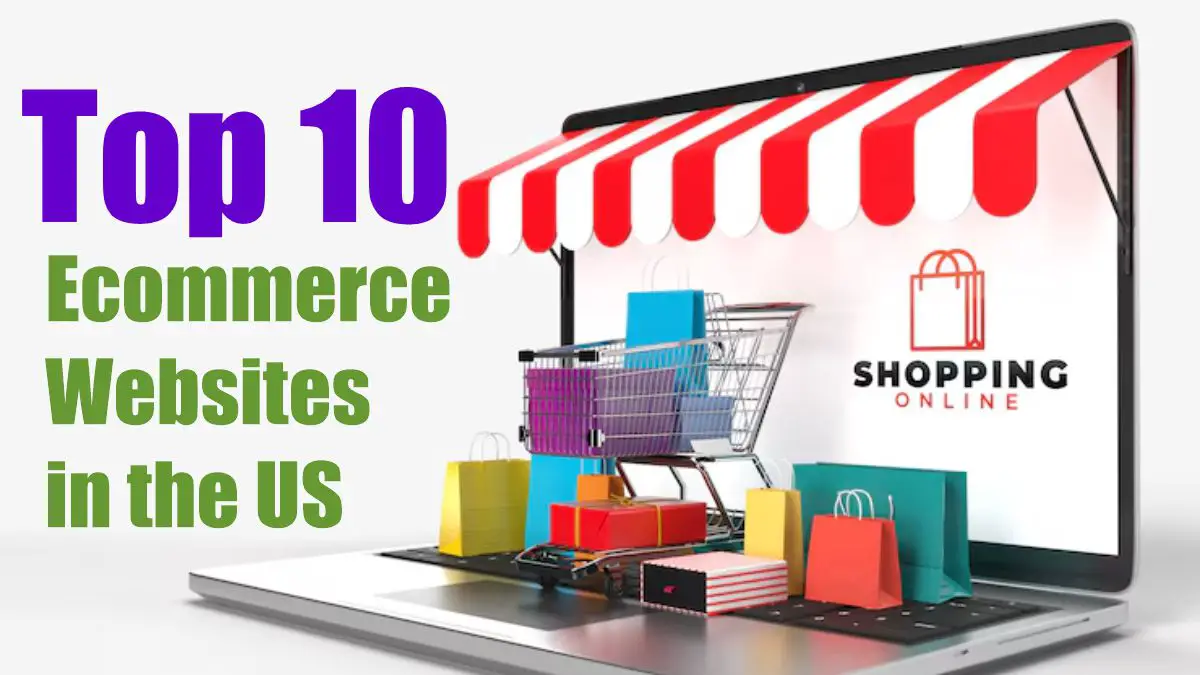The ecommerce landscape has undergone tremendous growth, with the industry generating over $1 trillion in revenue in 2024 alone. As we enter 2025, certain ecommerce platforms stand out, not just for their revenue, but for their unique features, user engagement, and customer satisfaction.
This article critically examines the top 10 ecommerce websites in the United States for 2025, offering insights into their key features, distinctive advantages, and comprehensive statistics.
Best Ecommerce Websites in the US in 2025 – Monthly Data
| Website | Monthly Visits (November 2024) |
| Amazon | 3.63B |
| Ebay | 690.27M |
| Walmart | 540.6M |
| Etsy | 458.3M |
| Shopify | 218.63M |
| Target | 200.6M |
| Best Buy | 233.29M |
| Home Depot | 232.01M |
| Costco | 137.04M |
| Wayfair | 89.91M |
Source: Semrush
1. Amazon: The Ecommerce Giant
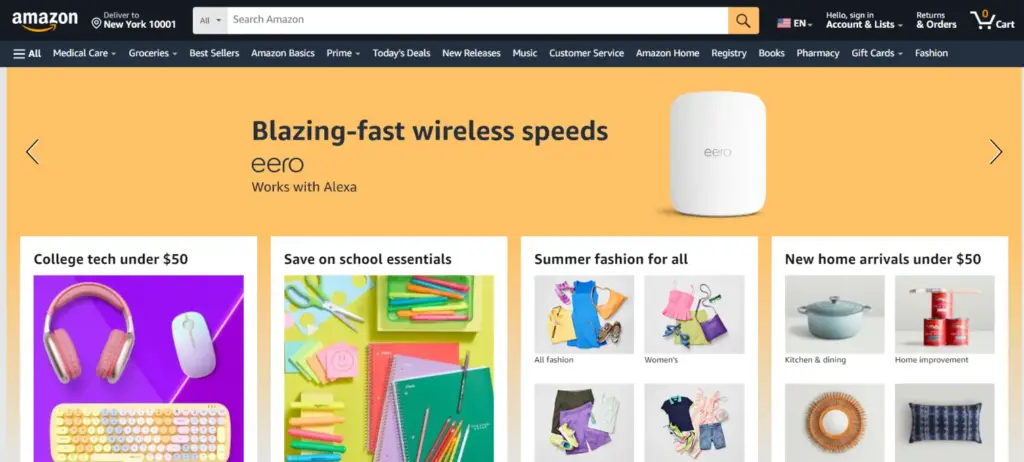
Overview
Founded by Jeff Bezos in 1994, Amazon began as an online bookstore in Seattle, Washington. Today, it stands as a major player in the global retail market, offering billions of products across countless categories.
Key Features
- Diverse Product Range: Amazon’s inventory includes everything from electronics to groceries.
- User-Friendly Experience: The site’s streamlined navigation and personalized recommendations contribute to a seamless shopping experience.
- Amazon Prime: Members enjoy benefits like free two-day shipping, access to streaming services, and exclusive discounts.
Unique Selling Propositions
Amazon Prime boasts over 200 million subscribers, granting multiple premium services. The company’s success in cloud computing through Amazon Web Services (AWS) also significantly bolsters its profit margins.
Statistics & Insights
2. eBay: The Marketplace Innovator
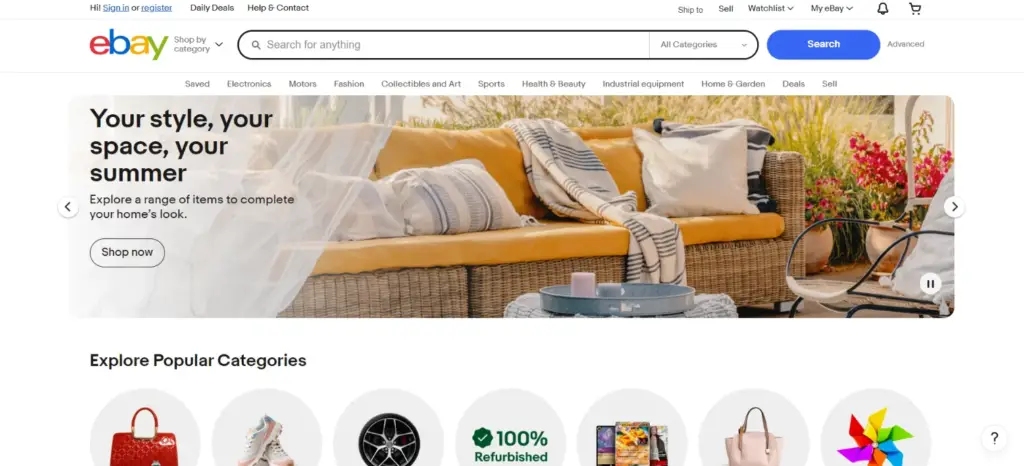
Overview
Founded in 1995 by Pierre Omidyar, eBay revolutionized online commerce by creating a platform where users can buy and sell goods in an auction format.
Key Features
- Auction and Buy-It-Now Options: Users can either bid on items or buy them outright, offering flexibility in purchasing.
- Global Reach: eBay facilitates transactions in over 190 markets worldwide.
- User Feedback System: This feature enhances trust among buyers and sellers through ratings and reviews.
Unique Selling Propositions
eBay Plus membership provides users with perks like free shipping and returns, fostering customer retention. The platform also emphasizes sustainability by reducing carbon emissions in its operations.
Statistics & Insights
3. Walmart: The Retail Powerhouse
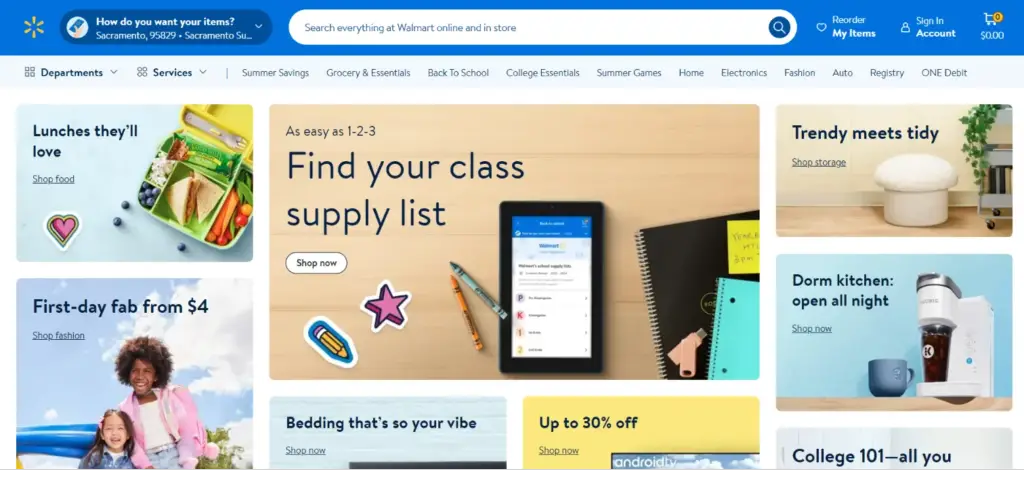
Overview
Walmart, founded in 1962 by Sam Walton in Bentonville, Arkansas, is one of the largest retail corporations globally, offering a less expensive alternative to other ecommerce giants.
Key Features
- Extensive Product Selection: Walmart.com features a comprehensive range of items from groceries to electronics.
- Competitive Pricing: Frequent discounts and rollback offers attract bargain hunters.
- Convenient Local Returns: Shoppers appreciate the flexibility of returning items to local stores.
Unique Selling Propositions
Walmart+ membership offers free shipping and exclusive discounts, enhancing customer loyalty while providing an alternative shopping experience to Amazon.
Statistics & Insights
- Monthly Visits: 540.6 million
- Fiscal Year 2024 Revenue: Approximately $648 billion
- Online Shopping Growth: Digital sales accounted for 18.3% of total sales
4. Etsy: The Niche Marketplace
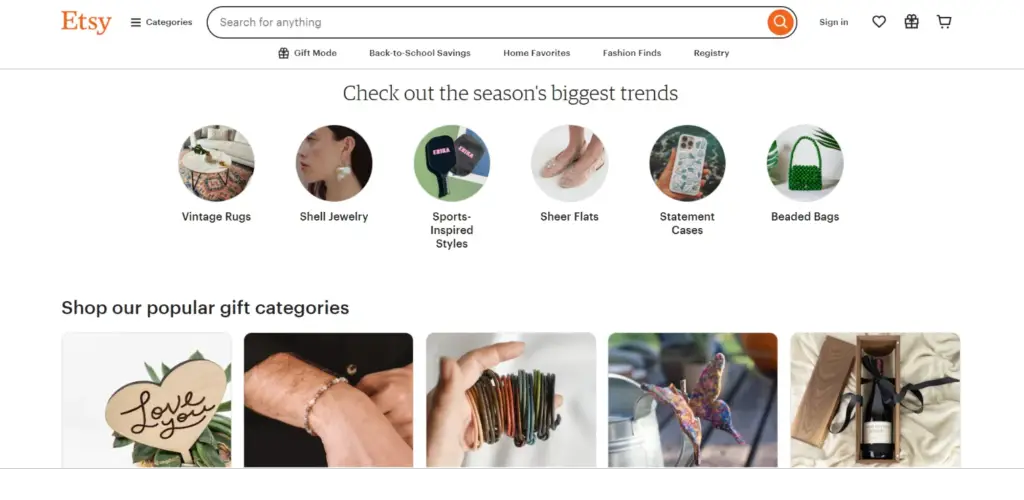
Overview
Founded in 2005 by Rob Kalin, Etsy connects buyers with independent sellers specializing in handmade and vintage items.
Key Features
- Unique Merchandise: Etsy offers a wide variety of custom and vintage goods not typically found elsewhere.
- Seller Tools: The platform’s resources allow sellers to optimize their shop experience and deepen customer engagement.
- Secure Transactions: Etsy’s payment system supports different payment methods, ensuring buyer security.
Unique Selling Propositions
Etsy stands out by focusing exclusively on handmade and vintage items, cultivating a dedicated customer base interested in unique products.
Statistics & Insights
- Monthly Visits: 458.3 million
- User Loyalty: A significant portion of sales comes from repeat buyers.
- Environmental Commitment: Etsy offsets carbon emissions for all shipping activities.
5. Shopify: The Empowering Platform
Overview
Founded in 2006 by Tobias Lütke, Shopify serves as a Software as a Service (SaaS) platform enabling businesses to create their online storefronts.
Key Features
- User-Friendly Interface: Setting up and managing an online store has never been easier.
- Customization Options: Robust tools support diverse business needs with customizable templates and payment gateways.
- Global Operations: Shopify allows businesses worldwide to engage in ecommerce, with 60% of its stores located in the USA.
Unique Selling Propositions
Shopify’s app ecosystem enhances store functionality, while its dedicated customer service and educational resources support user success.
Statistics & Insights
- Monthly Visits: 218.63 million
- Q1 2024 Revenue: $1.9 billion
- Active Merchants: Over 2 million globally
6. Target: The Stylish Retailer
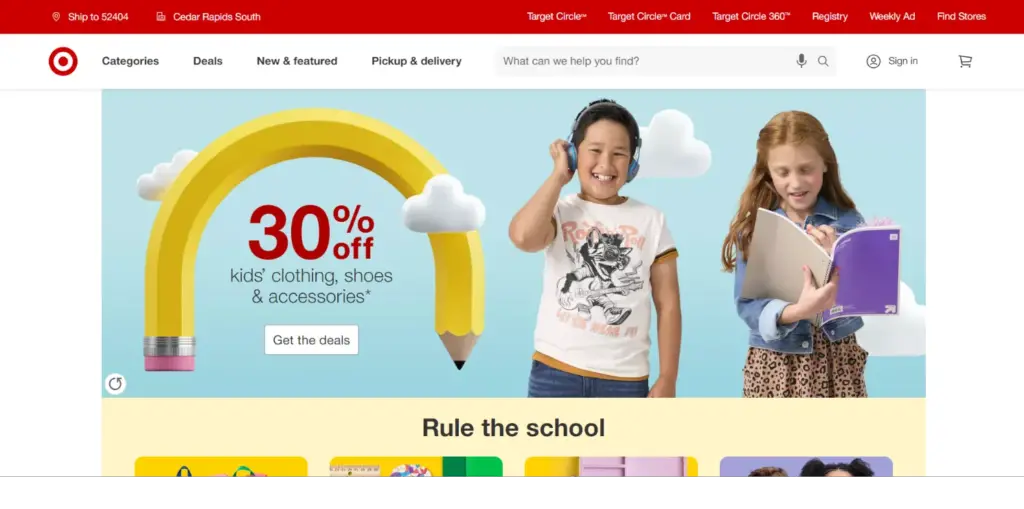
Overview
Established in 1902 by George Dayton, Target has become synonymous with affordable yet trendy merchandise, attracting a wide variety of consumers.
Key Features
- Broad Product Range: From home goods to groceries, Target offers quality products at competitive prices.
- Specialty Shops: The online presence features shops focused on specific interests, such as eco-friendly products.
- User-Friendly Experience: The website and app are designed for easy navigation and shopping.
Unique Selling Propositions
Target’s loyalty program, Target Circle, offers personalized deals, making it an attractive choice for price-conscious consumers.
Statistics & Insights
- Monthly Visits: 200.6 million
- Q1 2024 Revenue: $24.5 billion
- Digital Sales Growth: Digital sales represented 18.3% of total revenues.
7. Best Buy: The Technology Hub
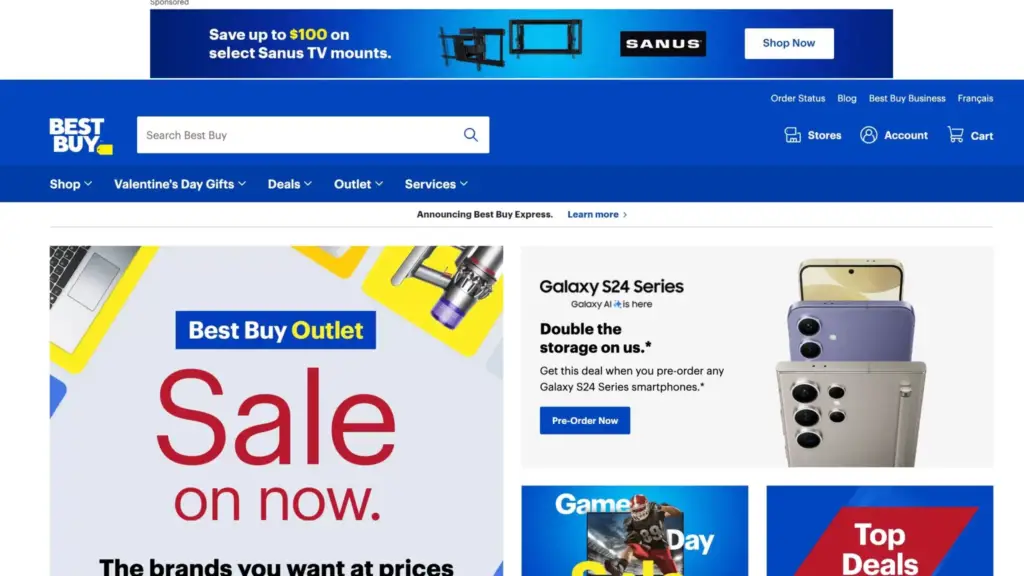
Overview
Founded in 1966 by Richard M. Schulze and James Wheeler, Best Buy serves as a leading retailer for electronics and household technology.
Key Features
- Diverse Electronics Inventory: Offering everything from computing to smart home devices.
- In-Store Experience: Best Buy provides hands-on product trials, enhancing customer knowledge before purchase.
- Geek Squad: This tech support service adds value for customers needing installation and tech assistance.
Unique Selling Propositions
The My Best Buy loyalty program offers points for purchases, fostering customer engagement and retention.
Statistics & Insights
- Monthly Visits: 233.29 million
- 2024 Revenue: $43 billion (a decrease from previous years)
- Market Presence: Operates across the United States, Canada, and Mexico.
8. Home Depot: The Home Improvement Leader
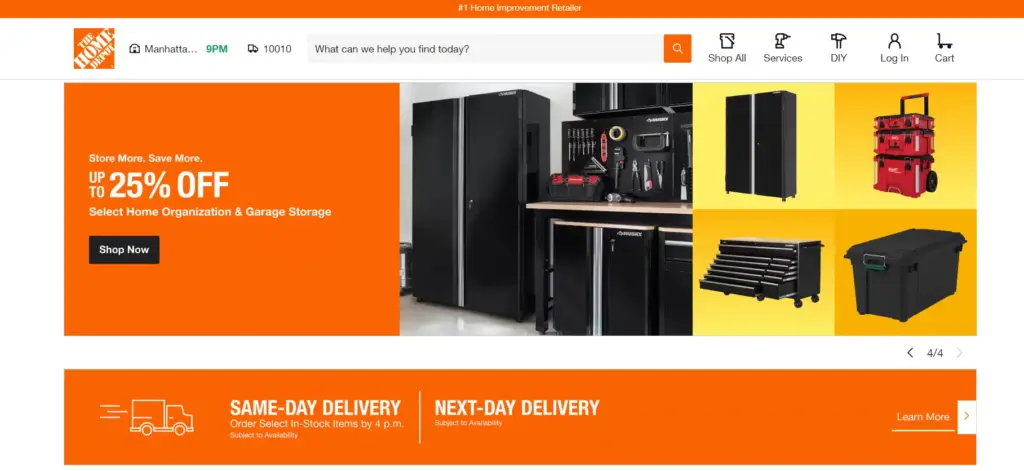
Overview
Founded in 1978 by Bernard Marcus and Arthur Blank, Home Depot is the top home improvement retailer in the United States, catering to both DIY consumers and professional contractors.
Key Features
- Vast Product Selection: Home Depot provides everything from building materials to garden supplies.
- In-Store and Online Services: Options such as tool rental and DIY workshops support customer projects.
- User-Friendly Interface: Both the website and app are designed for seamless navigation.
Unique Selling Propositions
Pro Xtra, a loyalty program aimed at professionals, offers exclusive benefits, making Home Depot a favorite among contractors.
Statistics & Insights
- Monthly Visits: 232.01 million
- Q1 2024 Net Earnings: $3.6 billion
- Renewable Commitment: Aimed to source 100% renewable electricity by 2030.
9. Costco: The Membership Retailer
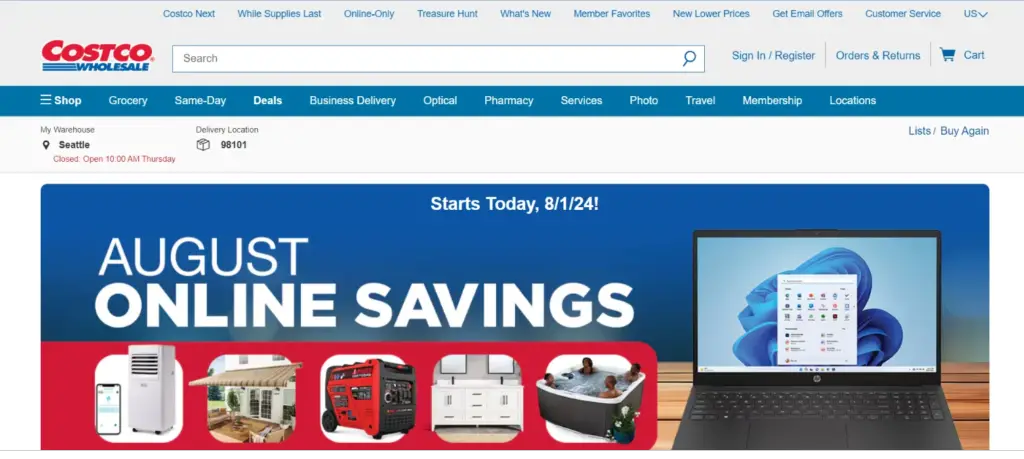
Overview
Founded in 1983 by James Sinegal and Jeffrey Brotman, Costco operates as a membership-based wholesaler, offering quality goods at competitive prices.
Key Features
- Bulk Offerings: Extensive product ranges available in large quantities.
- Diverse Services: From travel deals to insurance services, Costco offers more than just retail.
- Member-Only Access: Exclusive deals for members, contributing to customer loyalty.
Unique Selling Propositions
Costco’s private-label Kirkland Signature items are known for quality, enhancing the value proposition for members.
Statistics & Insights
- Monthly Visits: 137.04 million
- Q1 2024 Revenue: Approximately $58.52 billion
- Employee Count: Around 208,000 worldwide.
10. Wayfair: The Online Furniture Retailer
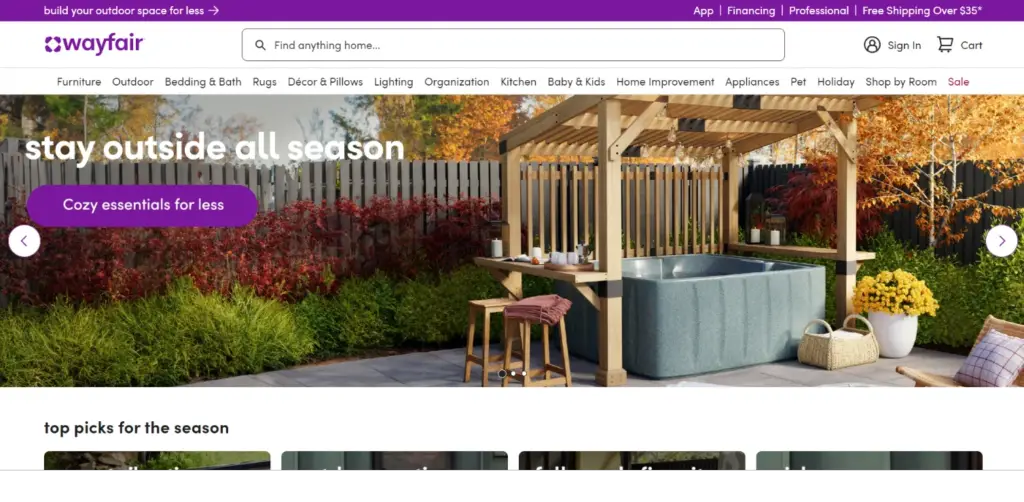
Overview
Founded in 2002 by Niraj Shah and Steve Conine, Wayfair specializes in furniture and home goods, providing customers with an extensive selection.
Key Features
- Diverse Home Goods Selection: Offers furniture, décor, and kitchenware from a variety of suppliers.
- User-Centric Navigation: Advanced filters and easy checkout improve the overall shopping experience.
- Design Inspiration: The website features articles and design ideas to assist customers.
Unique Selling Propositions
Wayfair Professional is designed for businesses and interior designers, providing unique discounts and access to exclusive services.
Statistics & Insights
- Monthly Visits: 89.91 million
- Q1 2024 Revenue: $2.7 billion
- Active Customers: Totaling 22.3 million as of early 2024.
Emerging Trends in Ecommerce for 2025
As we delve deeper into 2025, the ecommerce sector is not only expanding in scale but also adapting to new consumer behaviors and technological advancements. Here are some key trends reshaping the landscape of online shopping:
1. Enhanced Personalization
Consumers are now expecting tailored experiences when they shop online. Ecommerce platforms are leveraging advanced data analytics and artificial intelligence (AI) to offer personalized recommendations based on previous purchases, browsing history, and user preferences. By analyzing customer data, platforms can curate unique shopping experiences that resonate with individual users, leading to higher engagement rates and increased sales.
Example: Amazon has implemented sophisticated algorithms that highlight products based on user shopping patterns. This not only improves user satisfaction but also drives sales conversions.
2. Sustainability Initiatives
As environmental consciousness grows, consumers are becoming more selective about the brands they support. In 2025, many ecommerce businesses are expected to highlight their sustainability efforts, such as eco-friendly packaging, carbon-neutral shipping, and ethically sourced products. Brands that prioritize sustainability will likely attract more environmentally-conscious shoppers who prefer to spend their money with responsible corporations.
Example: Etsy has taken significant strides in offsetting carbon emissions from shipping, allowing customers to shop with the assurance that their purchases are environmentally friendly.
3. Integration of Augmented Reality (AR)
Augmented Reality (AR) is revolutionizing how consumers interact with products online. With AR technology, customers can virtually try on clothing, visualize how furniture fits into their rooms, or explore products in 3D before making a purchase. This immersive shopping experience boosts consumer confidence in their buying decisions, reducing the likelihood of returns.
Example: Wayfair has integrated AR tools allowing customers to see how furniture looks in their homes, improving their engagement and satisfaction while reducing uncertainty.
4. Social Commerce Growth
Social media platforms are increasingly becoming shopping hubs, with features that enable purchasing directly through ads or shoppable posts. As platforms like Instagram and TikTok integrate ecommerce functionalities, brands are capitalizing on the immense user engagement of social media to drive sales. Social commerce not only allows brands to reach a broader audience but also facilitates the discovery of new products in an organic manner.
Example: Target has harnessed social media tools to promote exclusive deals and seasonal trends, effectively driving engagement and converting followers into customers.
5. Voice Commerce Expansion
With the growing popularity of smart speakers and voice assistants, voice commerce is emerging as a convenient shopping method. Consumers can make purchases hands-free, check order statuses, and add items to their cart through voice commands. This trend is especially appealing to busy individuals or those looking for convenience in the shopping process, further driving the need for companies to optimize their websites for voice search.
Example: Amazon Echo users can order items directly from Amazon with a simple voice command, significantly enhancing the shopping experience.
6. Subscription-Based Models
The subscription model is gaining traction in ecommerce, with brands offering products on a recurring basis. Subscription services provide convenience for consumers who prefer to automate their purchasing of essentials or enjoy curated experiences. This model ensures steady revenue for companies and fosters customer loyalty, as subscribers are more likely to stick with brands that deliver consistent value.
Example: Boxed offers a subscription service for bulk grocery items, simplifying the shopping process for consumers who want to avoid repetitive purchases.
7. Enhanced Payment Options
As consumer preferences shift, the demand for diverse and flexible payment options grows. Ecommerce platforms are adopting digital wallets, buy-now-pay-later schemes, and cryptocurrencies to facilitate various payment methods. Offering multiple payment options can improve conversion rates, as customers appreciate the flexibility in how they can complete transactions.
Example: Shopify allows merchants to accept cryptocurrencies alongside more traditional payment methods, appealing to a tech-savvy audience looking for modern payment solutions.
8. Improved Customer Support Automation
With the help of AI and chatbots, ecommerce platforms are enhancing customer support by offering 24/7 assistance for inquiries and concerns. Chatbots can handle common questions while also directing users to more complex support channels when necessary. This trend streamlines customer service and improves satisfaction as users can get immediate support without waiting for human intervention.
Example: Best Buy employs AI-driven chatbots that help customers track their orders, find products, and answer frequently asked questions seamlessly.
The Future of Ecommerce in a Dynamic Landscape
As we move forward in 2025, the continued evolution of ecommerce platforms will focus not only on market competition but also on meeting customer expectations and preferences. Brands must remain agile, adapting to emerging trends and technologies while ensuring a positive user experience.
Frequently Asked Questions About US Ecommerce Websites
1. How do I find the best ecommerce platform for my business?
Determine your needs by evaluating factors such as user interface, customization capabilities, payment options, and customer support. Shopify is often recommended for its comprehensive features tailored for various business sizes.
2. What contributes to Amazon’s success as the leading ecommerce website in the US?
Amazon excels due to its wide array of products, rapid delivery times, and exceptional customer service, further enhanced by services like Fulfillment by Amazon (FBA).
3. How does Shopify differ from other ecommerce platforms?
Shopify serves as a comprehensive platform that allows businesses to set up and manage their online stores with a range of tools for product management, payments, and shipping solutions.
4. Which ecommerce site is best suited for small businesses?
Shopify is ideal for small businesses, with its user-friendly interface and extensive features that simplify managing online stores.
5. How do Walmart’s offerings compare to those of Amazon?
Both platforms boast extensive product ranges; however, Walmart tends to emphasize competitive pricing and localized services, while Amazon leads in inventory breadth and delivery speed.
6. What are the advantages of selling on Etsy?
Etsy specializes in unique, handmade, and vintage products, appealing to a customer base that seeks distinct goods not typically available on larger platforms.
7. Why is customer service important in ecommerce?
Excellent customer service addresses issues effectively, enhancing the shopping experience and fostering long-term customer loyalty.
8. What benefits do US ecommerce websites offer?
They provide convenience, competitive pricing, and a diverse product selection, along with the ability to shop from virtually anywhere at any time.
9. Which ecommerce websites provide free shipping options?
Prominent ecommerce platforms, including Amazon, Walmart, and Target, typically offer free shipping based on minimum purchase requirements or through membership initiatives.
Conclusion
The ecommerce landscape continues to evolve, and the top platforms for 2025 showcase unique innovations in customer service, technology advancements, and tailored shopping experiences. Whether you’re seeking convenience, diverse selections, or specialized products, understanding what each ecommerce website offers can empower consumers to make informed decisions.
As these leading companies innovate and expand, they will undoubtedly solidify their positions in the continually growing ecommerce market.
You may like this: Top Parcel Courier Services in the US for E-commerce

